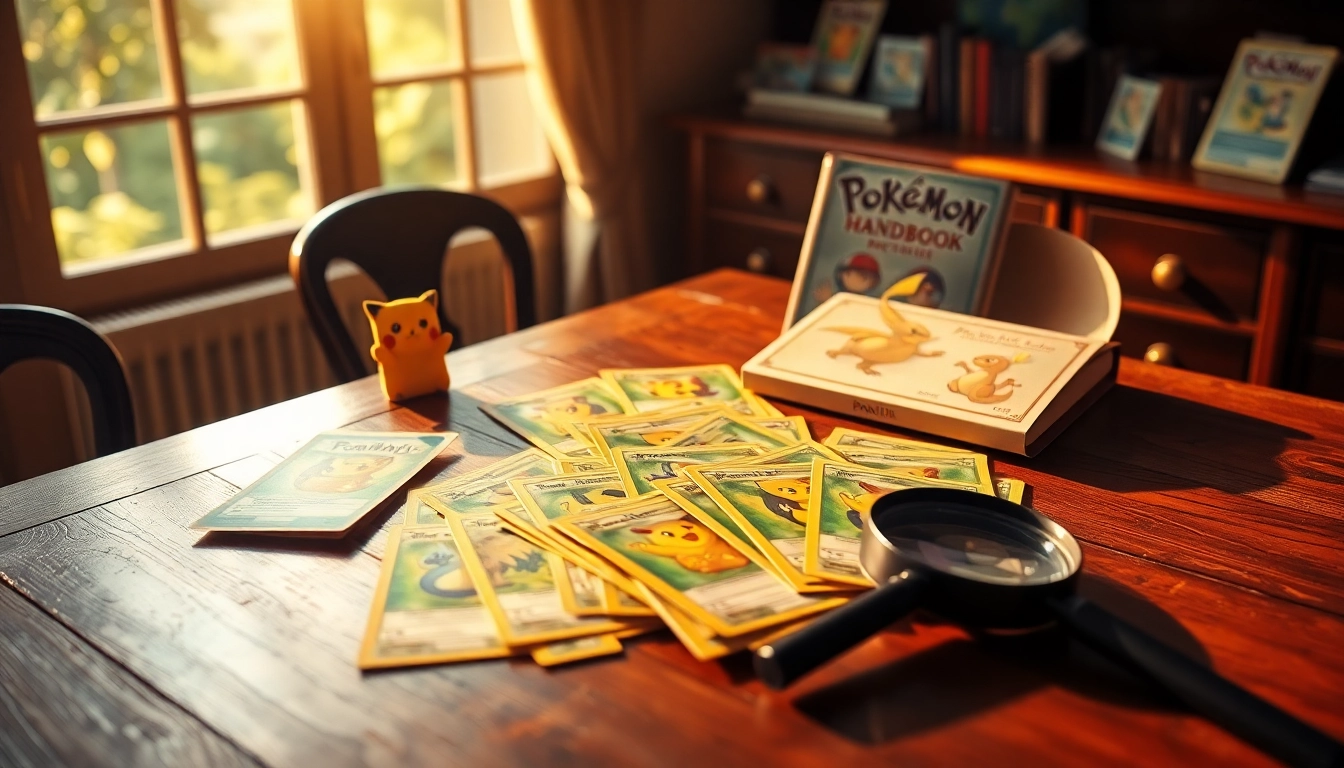Understanding Real Pokemon Cards
The Pokémon Trading Card Game (TCG) has captivated millions of fans worldwide, creating a thriving market for both collectors and players. As the popularity of Pokémon cards surges, so does the prevalence of counterfeit products. Understanding what constitutes real pokemon cards and being able to differentiate them from fakes is vital for any collector. This comprehensive guide will explore everything from the historical significance of Pokémon cards to best practices for collecting and storing them.
What Makes a Pokemon Card Real?
Real Pokémon cards possess certain characteristics that differentiate them from counterfeit versions. These traits often encompass aspects such as material quality, design consistency, and printing techniques. Authentic Pokémon cards boast a specific weight, a smooth finish, and vibrant colors that maintain consistency across the card series.
On a broader level, here are some essential features of authentic Pokémon cards:
- Material Quality: Genuine cards are printed on high-quality cardstock that feels sturdy and often has a glossy finish.
- Print Clarity: The graphics and text on real cards are sharp and clear, with no blurring or misalignment.
- Weight: Authentic Pokémon cards have a specific weight due to their material composition, which counterfeit cards often misrepresent.
- Holographic Features: Many real cards feature holographic elements that possess a unique sheen not easily replicated in fakes.
The History of Pokemon Cards and Their Value
Launched in 1996 in Japan, Pokémon cards became a significant cultural phenomenon. The original cards were based on the popular video game franchise, with collectors quickly emerging as the cards gained traction. Early editions, especially first-generation cards, have become highly sought after, often selling for thousands of dollars at auction.
Several factors contribute to the value of Pokémon cards:
- Rarity: Limited editions and rare cards generally fetch higher prices in the market.
- Condition: Cards graded by professional services exhibit their quality and authenticity, which directly influences their market value.
- Demand: Increased interest in Pokémon through various media channels, including video games and animated series, boosts the value of certain cards.
Common Types of Real Pokemon Cards
Pokémon cards are primarily categorized into several types, each with its unique features:
- Base Set Cards: The original series includes some of the most iconic Pokémon, such as Charizard, Pikachu, and Mewtwo.
- Holo Cards: Holographic versions of regular cards exhibit a shiny surface that makes them highly desirable.
- Special Editions: Cards released to mark special events or anniversaries often hold greater value due to their limited availability.
- Promo Cards: These are usually given out during events or tournaments and are often unique in design.
How to Identify Fake Pokemon Cards
With the rise of counterfeit cards, it’s crucial for collectors to learn how to spot fakes. There are several key indicators to consider when assessing the authenticity of a Pokémon card.
Visual Differences: A Comparison Guide
Visually inspecting a card is the first step in identifying a counterfeit. Here are some common visual indicators:
- Color: Fake cards often appear overly bright or have muted colors when compared to a genuine card.
- Text Clarity: The font used on fake cards can vary, with many displaying jagged edges or misprinted text.
- Alignment: Check the artwork and text alignment—fakes often have misalignment issues.
Texture and Print Quality: Key Indicators
The feel of a card can speak volumes about its authenticity. Here are the tactile cues to consider:
- Card Stock: Real cards are made from specific cardstock that feels smooth yet sturdy compared to the often flimsy feel of forgeries.
- Surface Finish: Genuine cards maintain a consistent gloss across their surface, while fakes might appear dull or uneven.
Advanced Techniques for Verification
For the keen collector, there are advanced techniques available for verifying card authenticity:
- Light Test: Holding a card to the light can reveal nuances in card construction, such as the presence or absence of a specific layer of light filtering that is typical of authentic cards.
- Black Light Test: Genuine Pokémon cards often react differently to UV light than fakes due to their unique printing processes.
- Magnification: Using a magnifying glass can help inspect the print pattern; authentic cards often use a method distinct from counterfeit ones.
Where to Buy Real Pokemon Cards
Finding genuine Pokémon cards requires knowledge of trusted retailers and marketplaces. Below are sources where collectors can find authentic products.
Trusted Online Retailers and Marketplaces
Reliable online platforms provide a secure shopping experience for Pokémon card buyers. Among the best options include:
- Official Pokémon Center: The official site is a prime source for verified Pokémon products, ensuring you receive authentic cards.
- Cardmarket: A European marketplace dedicated to trading cards, where sellers must meet strict standards to maintain buyer trust.
- Amazon: Dish out caution and confirm seller ratings and reviews to avoid counterfeits when purchasing cards here.
Local Game Stores: Finding Genuine Sellers
Local game stores (LGS) often hold community events and have knowledgeable staff who can assist collectors. Building a relationship with local sellers can also provide insights into where to find rare cards in your area.
Community Recommendations for Reliable Sources
Engaging with fellow collectors on platforms like Reddit or specialized forums can lead to invaluable recommendations:
- Online Forums: Subreddits like r/PokemonTCG can offer peer reviews and insights into trusted sellers.
- Social Media Groups: Joining Facebook or Telegram groups focused on Pokémon card collecting can help buyers find reputable sellers.
The Best Practices for Collecting and Storing Real Pokemon Cards
Protecting and preserving your collection is essential for maintaining its value. Here are best practices for handling, displaying, and storing Pokémon cards.
Proper Handling: Do’s and Don’ts
Handling your cards with care is imperative to prevent damage.
- Do: Hold cards from the edges to avoid unnecessary smudging and creasing.
- Don’t: Use rubber bands or tape to organize cards, as they can leave marks and cause wear.
Displaying Your Collection: Creative Ideas
How you display your collection can enhance its appearance and protect it from damage:
- Framing: Use UV-protective frames to showcase valuable cards, while keeping them secure from dust and moisture.
- Binders: Store cards in binders with protective sleeves, organizing them by sets, types, or personal preferences.
Long-Term Storage Solutions to Preserve Value
Preserving value requires appropriate consideration of storage conditions:
- Climate Control: Store cards in a temperature and humidity-controlled environment to prevent warping or humidity damage.
- Protective Gear: Invest in high-quality card holders or storage boxes designed for long-term preservation.
The Future of Real Pokemon Cards in the Collecting World
The landscape of Pokémon cards is continually evolving, influenced by trends in collecting, community engagement, and upcoming releases. Understanding these dynamics will help collectors navigate the future of this exciting hobby.
Trends in Pokemon Card Valuation
Trade values can fluctuate greatly based on various factors:
- Online Auctions: Many collectors are turning to auction platforms, driving sales prices based on demand.
- Market Influence: Popular media, such as television shows or games, can spike interest in specific cards, affecting their value.
Upcoming Releases and Collectible Sets
The Pokémon Company frequently announces new card sets that can reinvigorate collector interest:
- Special Expansion Packs: These often include rare cards or unique features that attract both players and collectors.
- Anniversary Sets: Major milestones in the Pokémon franchise often come with nostalgic releases that draw historical collectors.
Community Engagement: Clubs and Events
Participating in community activities can significantly enhance a collector’s experience:
- Local Tournaments: Many game shops host Pokémon TCG tournaments, offering opportunities to trade and buy cards while making connections.
- Conventions: Major gatherings often feature vendors, offering a treasure trove of collectibles.
In conclusion, understanding how to identify, purchase, and care for real Pokémon cards is essential for both newcomers and seasoned collectors alike. By adhering to the practices discussed, collectors can not only expand their collections with genuine items but also contribute effectively to the ever-growing legacy of Pokémon.



